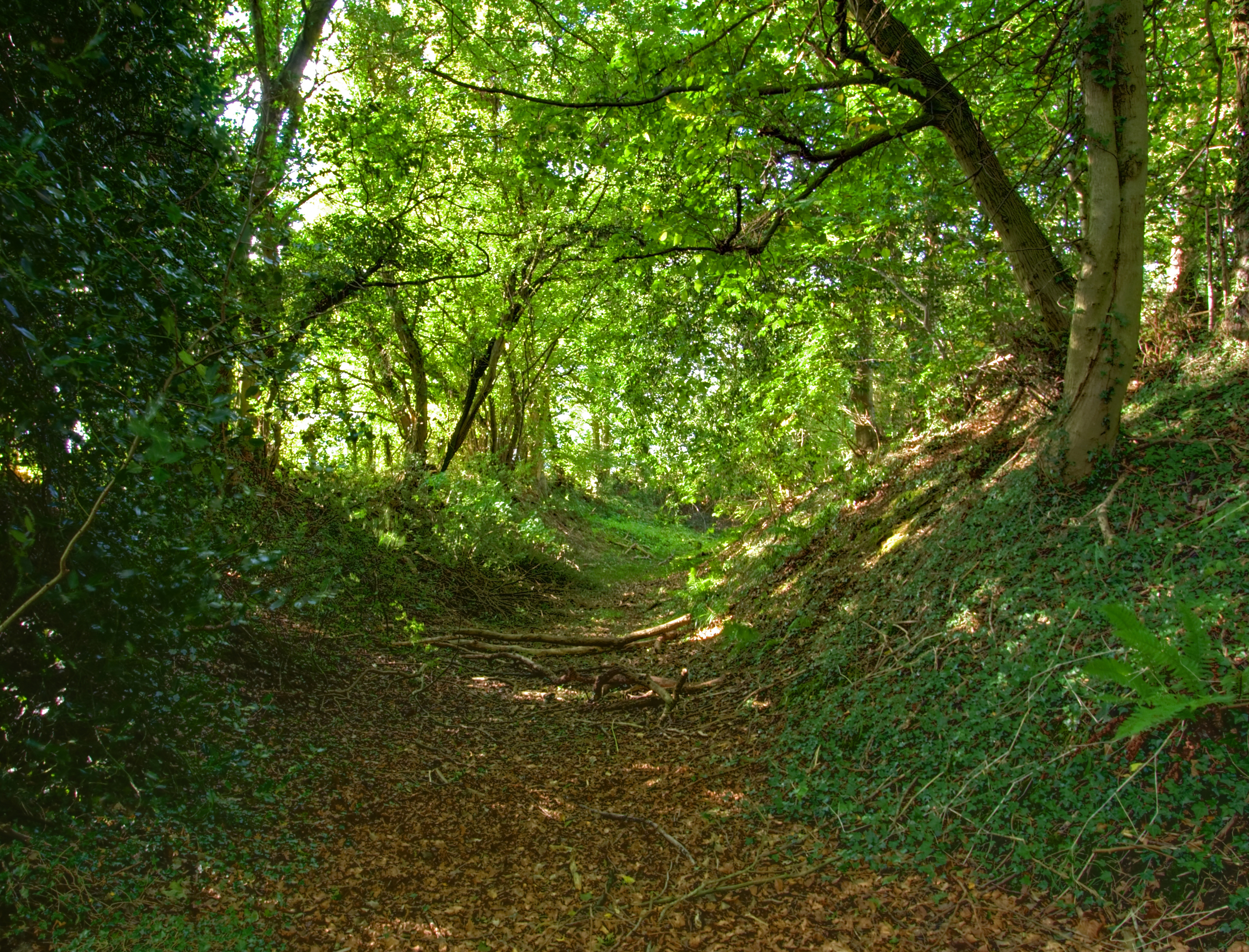Hawridge Court Ringwork on:
[Wikipedia]
[Google]
[Amazon]
 Hawridge Court ringwork is a small, well-preserved medieval fortification located in
Hawridge Court ringwork is a small, well-preserved medieval fortification located in
 Hawridge Court ringwork is a small, well-preserved medieval fortification located in
Hawridge Court ringwork is a small, well-preserved medieval fortification located in Cholesbury-cum-St Leonards
Cholesbury-cum-St Leonards is a civil parish in the Chiltern district of the English county of Buckinghamshire. It lies in the Chiltern Hills just to the north of Chesham, on the boundary with Hertfordshire.
It comprises the hamlet of Buckla ...
, in Buckinghamshire
Buckinghamshire (), abbreviated Bucks, is a ceremonial county in South East England that borders Greater London to the south-east, Berkshire to the south, Oxfordshire to the west, Northamptonshire to the north, Bedfordshire to the north-ea ...
, England. Ringworks are relatively rare in the UK, and date from the late Anglo-Saxon
The Anglo-Saxons were a Cultural identity, cultural group who inhabited England in the Early Middle Ages. They traced their origins to settlers who came to Britain from mainland Europe in the 5th century. However, the ethnogenesis of the Anglo- ...
period to the later 12th century. The site was designated a scheduled monument in 1996. It is under the care of English Heritage.
Description
Hawridge Court ringwork, in Cholesbury-cum-St Leonards, Buckinghamshire is a good example of a ringwork, a type of medieval fortified defensive structure. It is located south of Hawridge Common, on the western side of a valley between theChesham Vale
Chesham (, , or ) is a market town and civil parish in Buckinghamshire, England, south-east of the county town of Aylesbury, north-west of Charing Cross, central London, and part of the London metropolitan area, London commuter belt. It is in ...
and Cholesbury
Cholesbury (recorded as Chelwardisbyry in the 13th century) is a village in Buckinghamshire, England, on the border with Hertfordshire. It is situated in the Chiltern Hills, about east of Wendover, north of Chesham and from Berkhamsted.
Ch ...
. The site consists of a small but strongly defended medieval fortification, oval in layout. Its earthworks
Earthworks may refer to:
Construction
*Earthworks (archaeology), human-made constructions that modify the land contour
* Earthworks (engineering), civil engineering works created by moving or processing quantities of soil
*Earthworks (military), m ...
stand to almost their full height, and are mostly intact with its surviving entranceway.
The interior of the ringwork measures approximately
east to west, and north to south. It is surrounded by an earthen bank and external ditch. The bank varies between and in width. It rises nearly
above the interior, the vertical sides leading to a narrow path along
the top of the earthworks. The original entrance survives to the east, where a causeway,
in width, passes through the bank and the ditch.
History
Ringworks are a type of medieval fortification that date from the lateAnglo-Saxon
The Anglo-Saxons were a Cultural identity, cultural group who inhabited England in the Early Middle Ages. They traced their origins to settlers who came to Britain from mainland Europe in the 5th century. However, the ethnogenesis of the Anglo- ...
period to the late 12th century. They typically consist of a small defended area surrounded by a large ditch and bank. A timber fence or more rarely a stone wall would be built above the defensive earthworks. Inside the ringed defenses were buildings. Ringworks were used either for military operations or were built to defend manorial settlements. There are only 200 surviving examples of ringworks in the UK.
The Hawridge Court ringwork was most likely built after the Norman Conquest.
The first recorded evidence of this medieval fortification appears in the 13th
century, when the fortification was documented as belonging to the manor of Hawridge. The manor house buildings, which were probably built in the centre of the ringwork are believed to have been replaced by a new set of structures in the 16th century.
The northern section of the ringwork was removed several years later and its site was covered by an 18th-century farmhouse. The house was remodeled and
enlarged in the early 1900s, and the interior of the ringwork was used as part of the layout in the gardens.
The site was designated a scheduled monument in 1996. The surviving structures within the ringwork are not included in the scheduling, but the underground areas beneath these buildings are included in order to safeguard any earlier features that lie below ground. It is under the care of English Heritage.
See also
* Circular rampart *Ringfort
Ringforts, ring forts or ring fortresses are circular fortified settlements that were mostly built during the Bronze Age up to about the year 1000. They are found in Northern Europe, especially in Ireland. There are also many in South Wales ...
*Scheduled monuments in Buckinghamshire
There are 121 scheduled monuments in the county of Buckinghamshire, in England. These scheduled monument, protected sites date from the Neolithic period and include Tumulus, barrows, moated sites, ruined abbeys, Iron Age hillforts, a medieval hosp ...
References
{{Coord, 51.7432, -0.6252, region:GB_type:landmark, display=title Scheduled monuments in Buckinghamshire